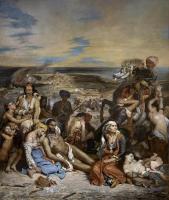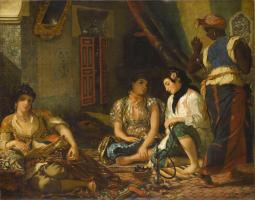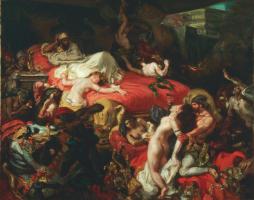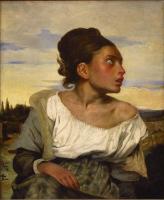Eugène Delacroix
Delacroix’s mother came of a family of noted designer-craftsmen, and his legal father, who died when Delacroix was a little boy, was an active revolutionary and Foreign Minister under the Directoire. Unprovable but tenacious rumour suggested that Talleyrand, the great politician and statesman, was Delacroix’s real father. In any event a network of connections, allied with his talent, helped to secure official patronage for him throughout his life.
By 1816 he was studying painting under Guerin — the teacher of Gericault, whom he ardently admired. Delacroix visited London and became deeply interested in English landscape painting, especially the work of Constable, and in the epic poets of England and Germany. He copied the masters in the Louvre, notably Rubens and Veronese, and although a superb draughtsman, colour was his passion. He declared that ‘when the tones are right, the lines draw themselves’.
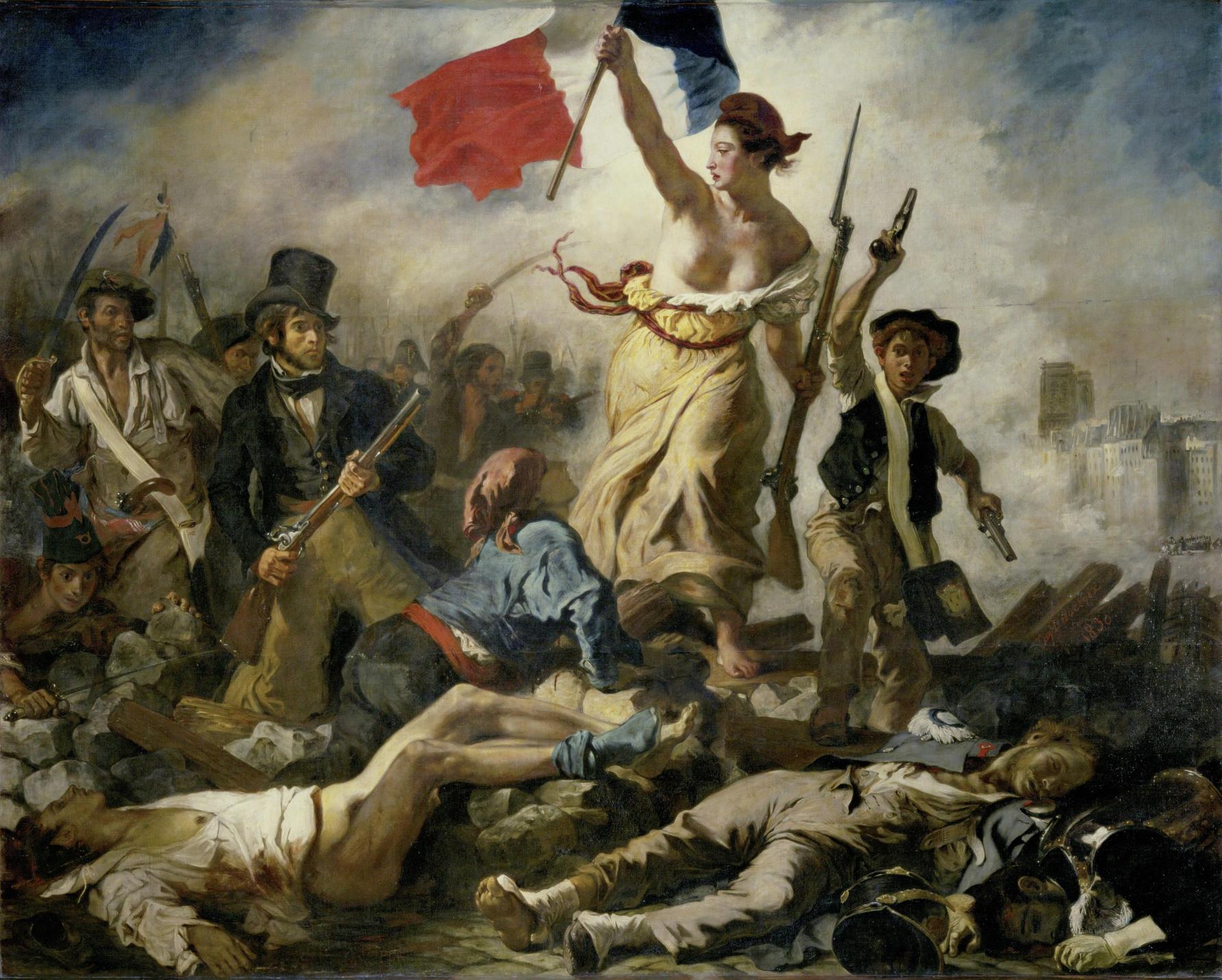 He had an enormous range of subject matter, much of which was based on literary
or historical incidents of the past, but although he lived through a time of
political upheaval, Liberty Leading the People is his only major work which
appears to comment directly on a topical event in France. He witnessed the
fighting in the streets in the Revolution of 1830, which brought Louis-Philippe
to the throne, and he wrote to his brother, ‘I have undertaken a modern
subject, a barricade, and if I have not conquered for my country, at least I
will paint for her.’
He had an enormous range of subject matter, much of which was based on literary
or historical incidents of the past, but although he lived through a time of
political upheaval, Liberty Leading the People is his only major work which
appears to comment directly on a topical event in France. He witnessed the
fighting in the streets in the Revolution of 1830, which brought Louis-Philippe
to the throne, and he wrote to his brother, ‘I have undertaken a modern
subject, a barricade, and if I have not conquered for my country, at least I
will paint for her.’
The painting is grand, stirring and highly political; and when it was exhibited in 1831 the coarseness of the characters depicted aroused controversy and criticism. Bare-breasted Liberty, beautiful and resolute, is waving the people forward to the barricades. She carries a bayonet and the tricolour banner of France, and on her head is the Phrygian cap of Liberty. She is striding barefoot through a field littered with corpses, and behind her is an armed band of men and boys, determined and ruthless in their fight for freedom from oppression. They are armed with swords, muskets, pistols and even rocks as they march through the streets of Paris. In the distance are the towers of Notre Dame amid a low-lying haze of gun smoke.
In Delacroix’s crowded composition there is an underlying order; the figure of Liberty and the two bodies in front of her form a triangle, and the use of red in the sash and scarf of the figure looking upwards create a powerful vertical link with the red in the banner above, an example of his highly imaginative use of colour. He has been labelled a Romantic, and although the harsh realities of death and destruction are exposed in all their horror, the painting has a glory and patriotism that is highly romantic and inspirational.
 Delacroix had completed the journey from startling, innovative colourist to
respected older artist by the time he came to influence modern masters, such as
Cézanne, Degas, Van Gogh and
Picasso. As long as he lived, he was, as the poet Baudelaire
wrote, “passionately in love with passion, and coldly determined to seek the
means to express passion in the manner visible.”
Delacroix had completed the journey from startling, innovative colourist to
respected older artist by the time he came to influence modern masters, such as
Cézanne, Degas, Van Gogh and
Picasso. As long as he lived, he was, as the poet Baudelaire
wrote, “passionately in love with passion, and coldly determined to seek the
means to express passion in the manner visible.”
Inspired by Gericault’s treatment of the theme of suffering, Delacroix presents a harrowing scene from the Greek rebellion against the Turks, which roused many Europeans (including Byron) to their cause. The painting was bought at the Salon of 1824 by the French government, perhaps by Talleyrand in covert support of his son. Significantly, at the same Salon, Delacroix encountered Constable’s Hay-wain.


